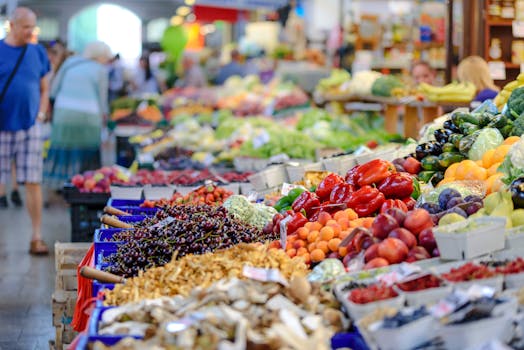Creating effective agricultural materials is essential for engaging your audience and disseminating vital knowledge. The agricultural sector demands high-quality information to support farmers, growers, and stakeholders in making informed decisions. This article outlines the process of developing these valuable resources.
Turning raw data into usable agricultural materials involves understanding the needs of your target audience. Effective communication of research findings, production techniques, and farming strategies translates into better practices. This article will guide you through the process, ensuring you create impactful materials.
From identifying your material’s purpose to selecting the right format, each step matters immensely. By following a structured approach, your agricultural materials can educate, inform, and empower those engaged in the industry. Let’s explore the steps involved in creating effective agricultural materials.
Understanding Your Audience
Before creating any materials, it’s crucial to identify your target audience. Knowing who will benefit from your content helps tailor your message effectively. Consider their demographics, education level, and specific needs.
Engaging with your audience helps in gathering insights on what they find valuable. Conduct surveys or interviews to collect feedback on what topics interest them the most. It creates a foundation for the development of relevant content.
A diverse audience may require different approaches to presenting information. For instance, beginner farmers may need straightforward guides, while advanced growers might seek in-depth analyses. Understanding these distinctions enhances material effectiveness.
By accommodating varied learning styles through visual aids, interactive elements, and simple language, your materials will engage more effectively. This tailored communication approach fosters better understanding among the audience.
Ultimately, understanding your audience forms the basis for creating materials that resonate. Your audience’s needs should drive the content, ensuring it serves its intended purpose effectively.
Defining Your Objectives
Every project requires clear objectives to ensure focus and direction. Identify what you want to achieve with your agricultural materials, whether it’s educating, promoting practices, or guiding decision-making. Clearly defined goals lead to more structured content.
Establish measurable outcomes to evaluate the success of your materials later. Whether you aim to increase engagement, sales, or adoption rates, tracking metrics provides insight into your impact. This data will inform future revisions and improvements.
Aligning your objectives with audience needs will make your materials more effective. Seek feedback early on to refine your goals and ensure they meet audience expectations. Audience-centric content fosters more significant engagement.
Keep your objectives flexible to accommodate changes in the agricultural landscape. The sector is dynamic, and your materials may require updates or adjustments. Regular reviews and evaluations will help maintain relevance.
Ultimately, clear and achievable objectives guide your content development. They ensure all efforts align with your audience’s expectations and industry standards for maximum impact.
Researching Content
Thorough research is a cornerstone of credible agricultural materials. Gathering accurate data on the latest farming practices, technologies, and trends forms the foundation of your content. Utilizing academic journals, government publications, and industry reports can enhance reliability.
Collaborate with agricultural experts to gain insights and perspectives that enrich your content. Their firsthand knowledge can lend authority and depth to your materials. Networking with professionals creates an exchange of valuable information.
Bear in mind regional differences when researching content, as agricultural practices can vary widely. Local conditions, crop varieties, and market demands influence what is most relevant for your audience. Tailoring your material enhances relevance and trustworthiness.
Consider the various formats for presenting research findings, such as infographics, articles, or videos. Each format can cater to different learning preferences, making the information more accessible and engaging.
Integrating diverse resources and perspectives can elevate the quality of your agricultural materials. Research ensures authenticity and aligns your content with current industry standards and practices.
Creating Engaging Formats
Choosing the right format for your agricultural materials impacts how your audience engages with your content. Various formats can include brochures, blog posts, videos, or infographics—each with its unique strengths.
Visual content tends to capture attention quickly, making infographics a popular choice for conveying complex data. They can distill information into digestible visuals, making it easier for your audience to retain knowledge.
Written content, while slightly less engaging, provides the depth necessary for detailed explanations. Blog posts, manuals, and articles can cater to audiences seeking comprehensive insights and guidelines.
Consider interactive formats as an engaging option for educational materials. Tools such as quizzes, calculators, and interactive videos actively involve your audience, reinforcing learning through participation.
Ultimately, the choice of format depends on your audience preferences and the goals of your material. Experimenting with different formats may yield the best results for effective engagement.
Incorporating Visual Aids
Visual aids enhance understanding by breaking down complex concepts and making information accessible. Incorporating images, charts, and graphs can clarify data and highlight essential points in your materials.
It is crucial to select high-quality visuals that complement your text effectively. Ensure they are relevant and appropriately placed within the content to reinforce the message without overwhelming the reader.
Using labeled diagrams can improve comprehension, particularly for intricate processes or equipment. These visuals provide clarity, showcasing step-by-step instructions or highlighting critical information within the agricultural context.
Creating a consistent visual style enhances professionalism. Consistency in colors, fonts, and layout across all materials helps establish brand identity and creates a cohesive audience experience.
Keeps user experience in mind—too many visuals can distract from the core message. Striking a balance between text and visuals promotes better understanding and encourages continued engagement.
Editing and Reviewing Content
Editing and reviewing are essential steps to ensure the quality and clarity of your agricultural materials. Revising content for coherence and precision reflects professionalism and enhances credibility with your audience.
Consider involving multiple reviewers with agricultural knowledge to gain diverse perspectives. This constructive feedback can identify areas that require clarification or additional information, elevating the material’s overall quality.
Pay attention to language and presentation. Simple, clear language paired with well-structured content can make complex agricultural topics more accessible. Avoid jargon unless it’s well-defined for your audience.
Check factual accuracy and ensure all claims are backed up by researched data. Misinformation can severely undermine your credibility and lead to poor decision-making in the agricultural community.
Finally, ensure that your materials are tailored to your format, whether it’s print or digital. Different platforms might require adjustments for readability and user engagement, ensuring maximum effectiveness.
Distributing and Promoting Your Materials
Once your agricultural materials are ready, the next step is distribution. Identifying the right channels to reach your audience, such as social media, email newsletters, or agricultural fairs, maximizes visibility and engagement.
Utilizing digital platforms extends your reach significantly. Posting content on websites, blogs, and social media platforms allows for direct audience interaction and feedback. Engaging followers can create a sense of community surrounding your materials.
Networking within farming communities can also enhance your reach. Collaborate with local farms, agricultural organizations, or educational institutions to share your materials. Partnerships can amplify your message effectively.
Consider offering materials in multiple languages to reach broader audiences. This inclusion fosters accessibility and ensures non-native speakers can benefit from your content.
Lastly, gathering feedback post-distribution will help refine future materials. Understanding the reception and impact enables ongoing improvement and better alignment with audience needs.
Conclusion
Creating effective agricultural materials involves a comprehensive understanding of your audience, clear objectives, robust research, engaging formats, and diligent editing. Each stage contributes significantly to the quality and impact of your materials.
By following these steps, you can develop resources that not only inform but empower individuals within the agricultural community. Continual engagement and improvement will elevate your materials further.
Ultimately, well-crafted agricultural materials drive better practices, inform decisions, and enhance growth. A commitment to quality will ensure your efforts yield fruitful results for the agricultural sector.
| Step | Description |
|---|---|
| Understand Your Audience | Identify demographics and needs to tailor content effectively. |
| Define Objectives | Set clear, measurable goals to align your project with audience expectations. |
| Research Content | Gather accurate information from credible sources to ensure reliability. |
| Create Engaging Formats | Select formats like blogs, infographics, or videos based on audience preferences. |
| Incorporate Visual Aids | Enhance understanding through appropriate images, charts, and diagrams. |
| Edit and Review Content | Ensure clarity, coherence, and accuracy through thorough revisions. |
| Distribute and Promote Materials | Identify effective channels to reach your audience and gather feedback. |
- Engage with your audience for insights.
- Maintain a balance between text and visuals.
- Foster partnerships to expand reach.
- Continuously gather feedback for improvements.
- Stay updated on agricultural trends.


